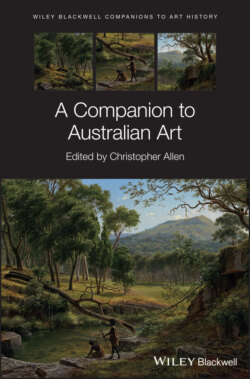Читать книгу A Companion to Australian Art - Группа авторов - Страница 38
Regional Galleries, and Private Initiatives
ОглавлениеA broad network of regional art galleries has been long established throughout Australia, the majority in the period after WW2. Extremely varied in size, type and purpose – and, of course, funding models – their provision of wide access to visual arts practice is a special feature of the Australian art world. The earliest regional galleries were established in Victoria, in the three major cities which grew from the gold rush in the 1850s, and the subsequent rise of the wool export industries: Ballarat (est. 1884), Bendigo (est. 1887) and Geelong (est. 1895). All three have distinguished historical collections, European and Australian, but it must be said that for most of the twentieth century Australian acquisitions and changing temporary exhibitions of Australian content have inevitably been the key priority. Victoria’s nearly 50 regional galleries are bound together by membership of the Public Galleries Association of Victoria, the secretariat of which is funded by government, and which enjoys the support of the NGV, which offers a strong loans program29. Most other states have established similar organizations (e.g. The Regional and Public Galleries Association of NSW, with some 40 members). For some years there have been discussions about creating a national body for these state-based organizations, the view prevailing that neither the Museums Association of Australia (recently rebranded in response to criticism of being of being too “museum-centric” as the Museums and Galleries Association of Australia (MGA)) nor the Council of Australian Art Museum Directors (CAAMD), whose membership only represents the nine major state and federal entities, could adequately represent their interests.
The major regional galleries in NSW (in Newcastle, Armidale, Bathurst etc), have also built up substantial permanent collections, of real distinction. In the Western District of Victoria the gifts of the Shaw family’s rich collections of European and Asian decorative arts, for example, provided the stimulus for the creation of a local, and thriving, art gallery in Hamilton (est. 1961). Aspects of its collection (e.g. Asian ceramics, British silver and important watercolors by Paul Sandly) are of global significance.
It is true to say however, that, with the exception of the relatively small group of major regional galleries of the kind mentioned above, most are small, often with perilous funding levels provided by local government. Most have relatively small permanent collections (some specialize in particular areas such as sculpture, ceramics or photography) but concentrate overall on temporary exhibitions of Australian painting and sculpture, and decorative arts and craft. Local governments are becoming increasingly aware of the potential to drive inward cultural tourism, and the Bendigo Art Gallery in central Victoria (easily accessible by road and rail from Melbourne) has led the way with medium-sized exhibitions drawn from global institutions, with a special emphasis on historical and contemporary fashion.
Regional galleries everywhere, which are funded by local councils, are all too often at a higher level of risk to funding and general support, subject to the changing interests and priorities of new mayors and councillors (unlike the state capital and federal art galleries, “guaranteed” by their enabling legislation), and there have been in recent years some regrettable instances of inappropriate and ill-informed decision-making by funding authorities, leading to disappointing disruptions.
The recent completion of HOTA (“The Home of the Arts”), a new visual and performing arts precinct for the Gold Coast (a thriving beach tourism and business region south of Brisbane in Queensland) provides at its centre a $60.5 million building for the collections and programs of the former Gold Coast Art Gallery. This ambitious project, fully funded by local government without state or federal government assistance, provides a welcome exception to the often inconsistent local funding for the arts mentioned above.
